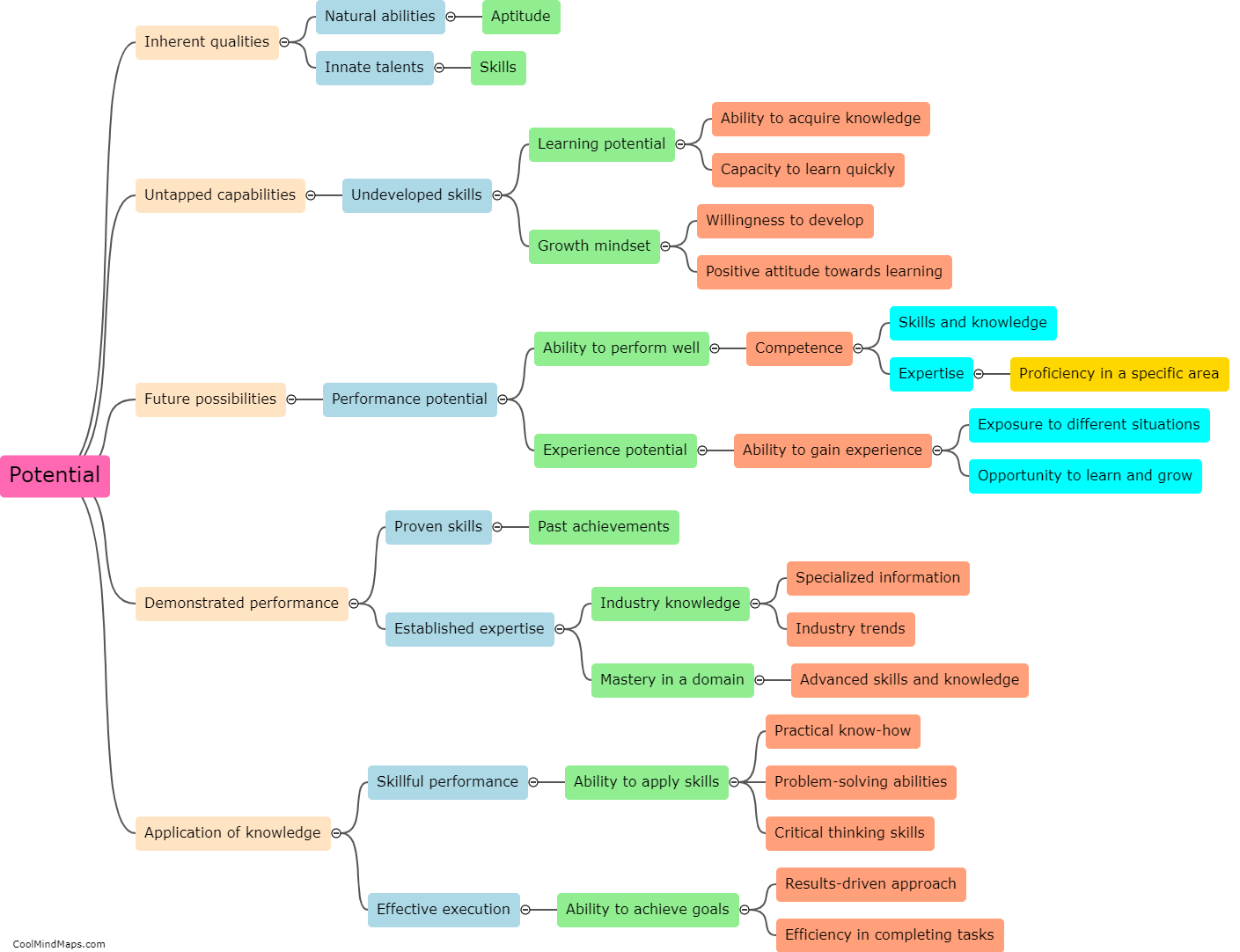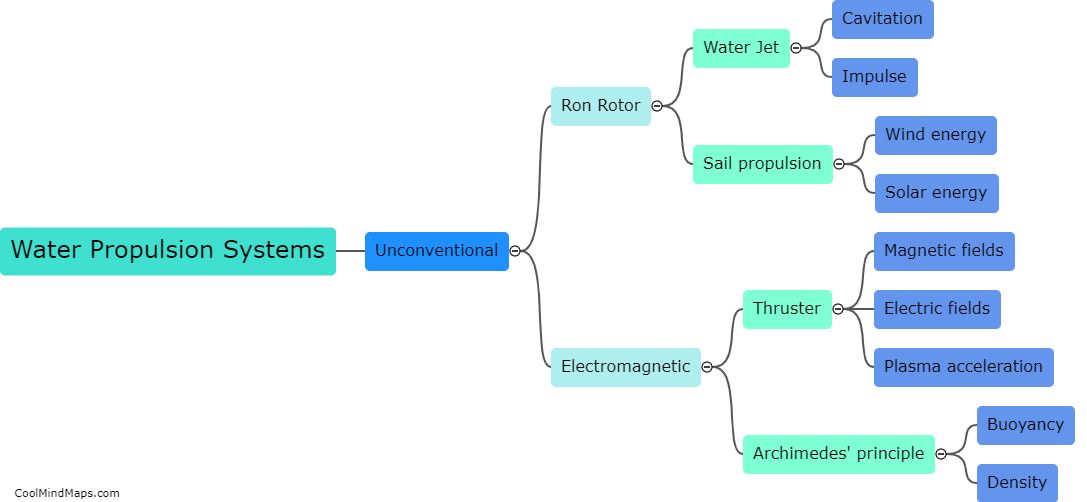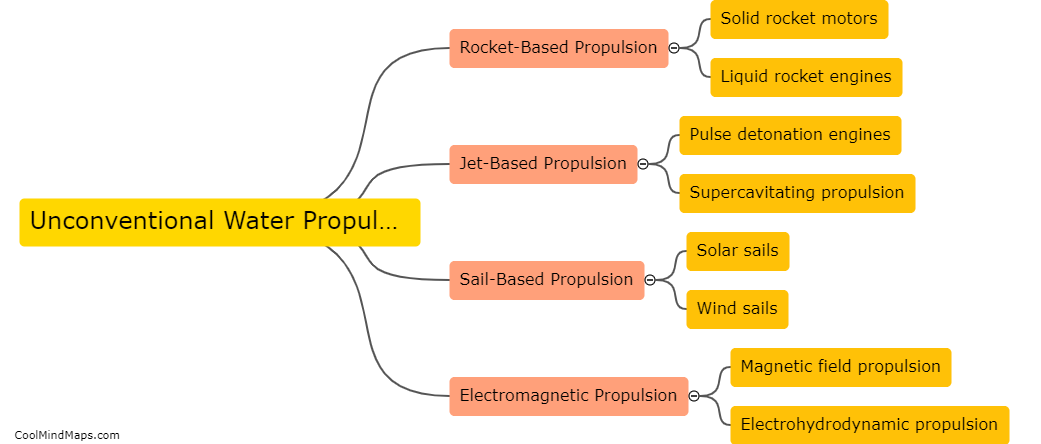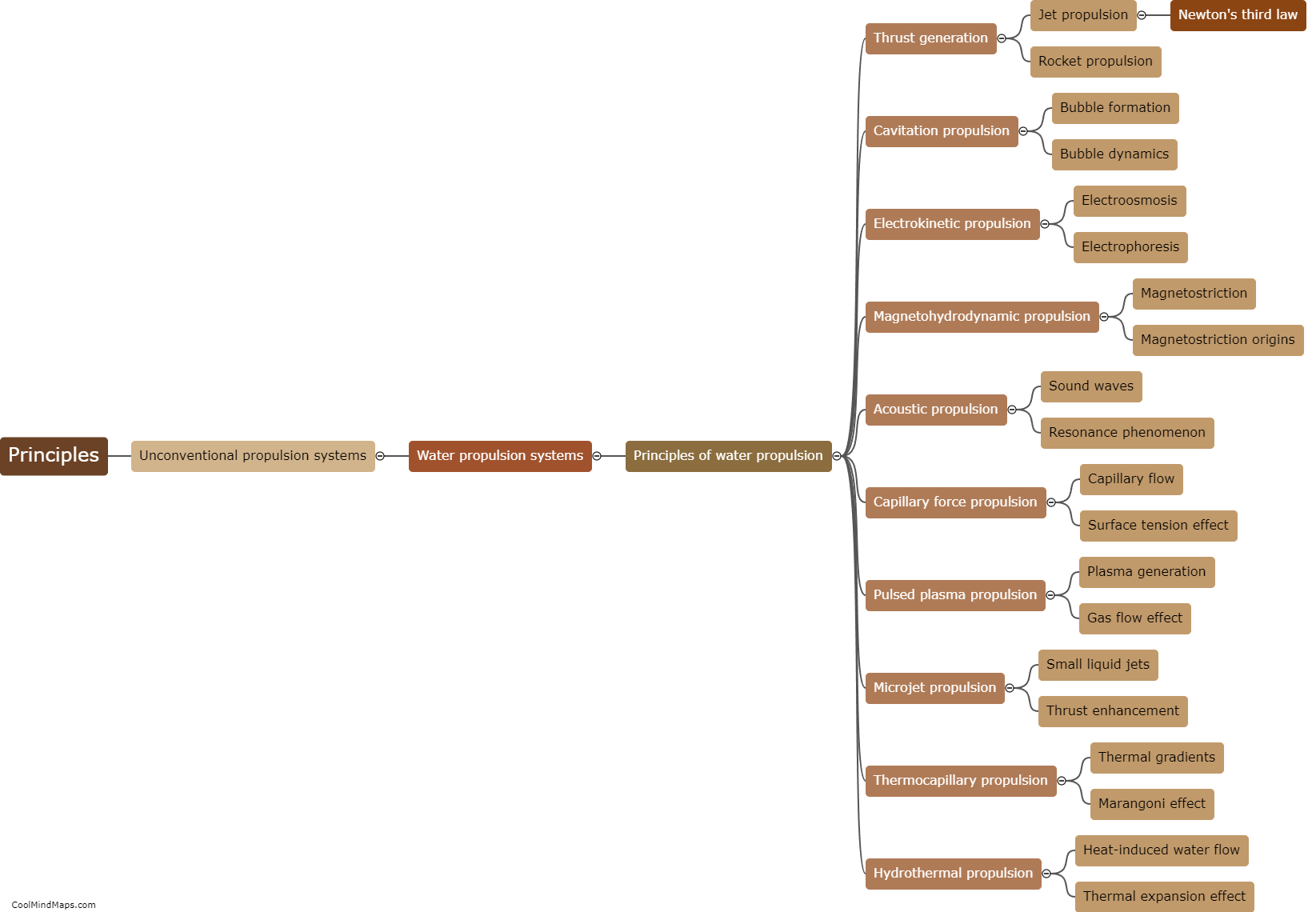What are unconventional water propulsion systems?
Unconventional water propulsion systems refer to alternative methods of propelling watercraft or underwater vehicles that deviate from traditional propeller-based systems. These unconventional systems aim to improve efficiency, reduce environmental impact, or offer unique capabilities compared to conventional propulsion methods. Examples of such systems include water jet propulsion, which uses the principle of jetting water out of a nozzle to create thrust, and magneto hydrodynamic (MHD) propulsion, which relies on electromagnetic fields to interact with a conductive fluid like seawater to generate propulsion. Other unconventional systems involve utilizing oscillating foils, biomimetic mechanisms inspired by marine animals, or even harnessing wave energy for propulsion. These innovative systems are continuously being developed to revolutionize the marine industry by offering more sustainable and efficient alternatives to traditional water propulsion technologies.
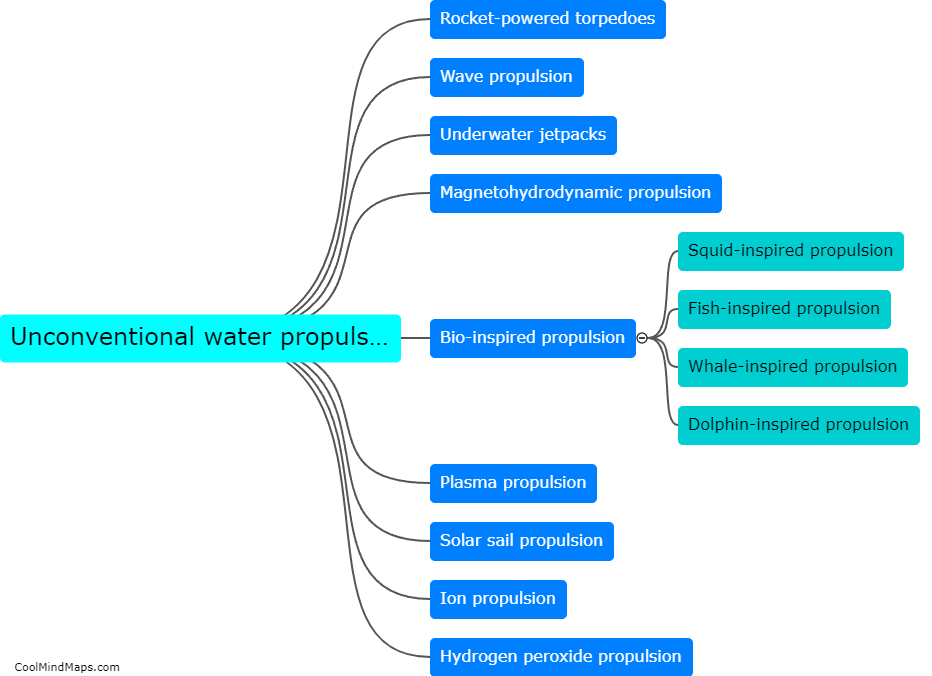
This mind map was published on 16 November 2023 and has been viewed 85 times.






